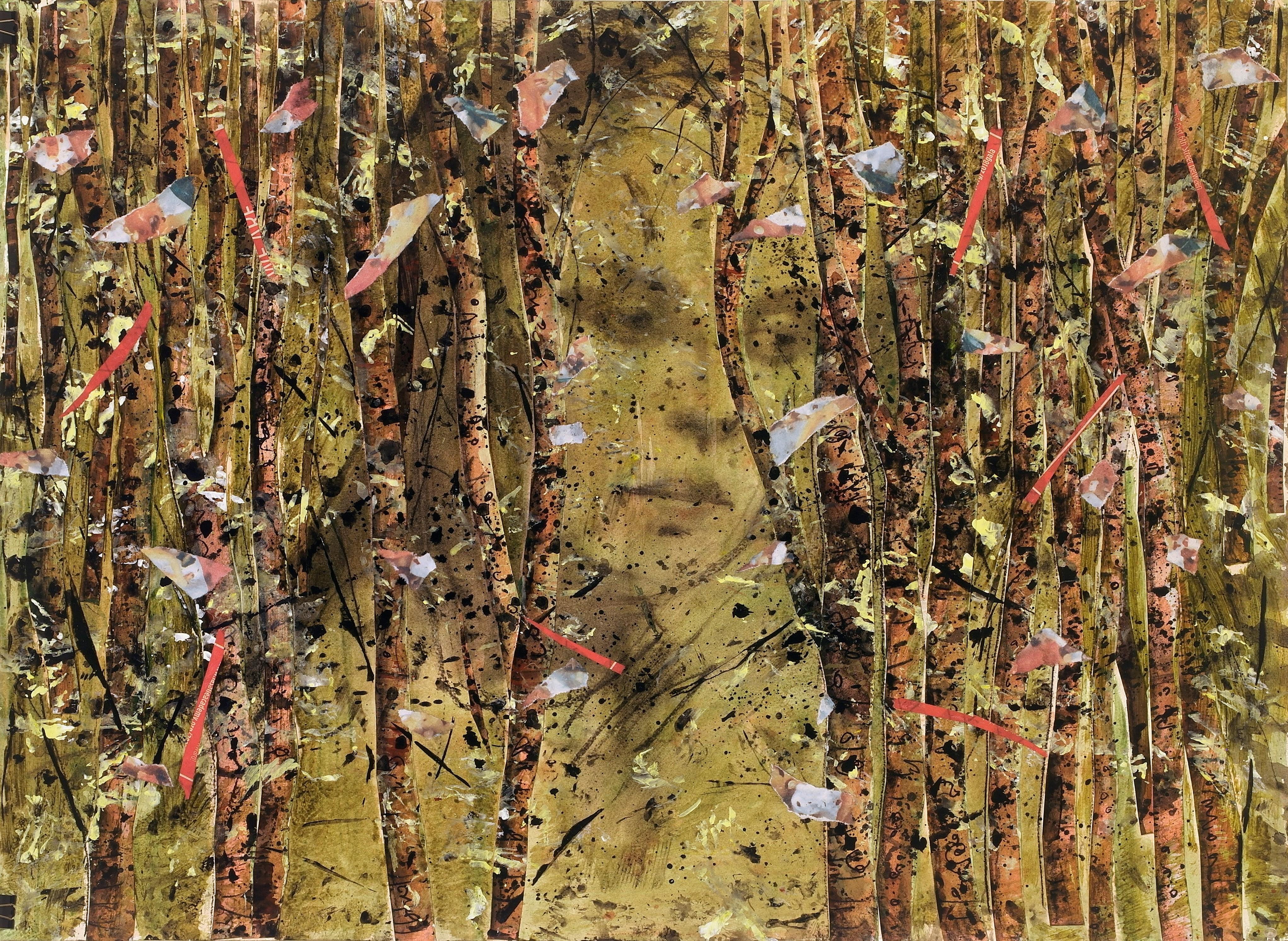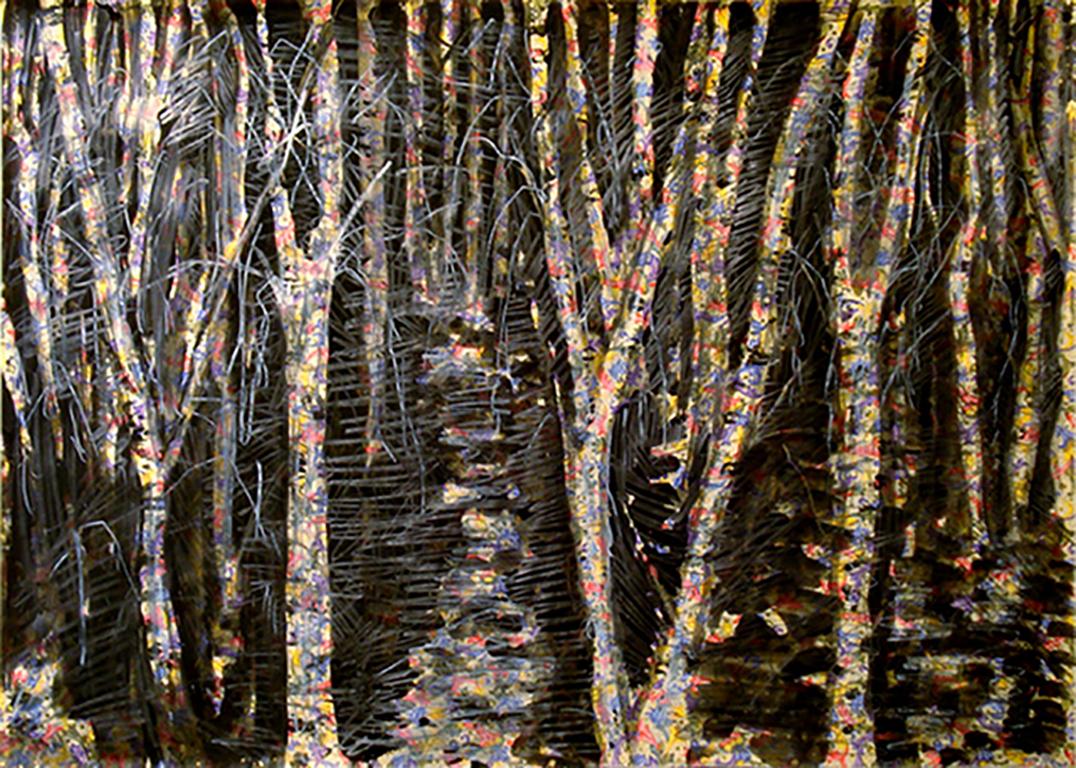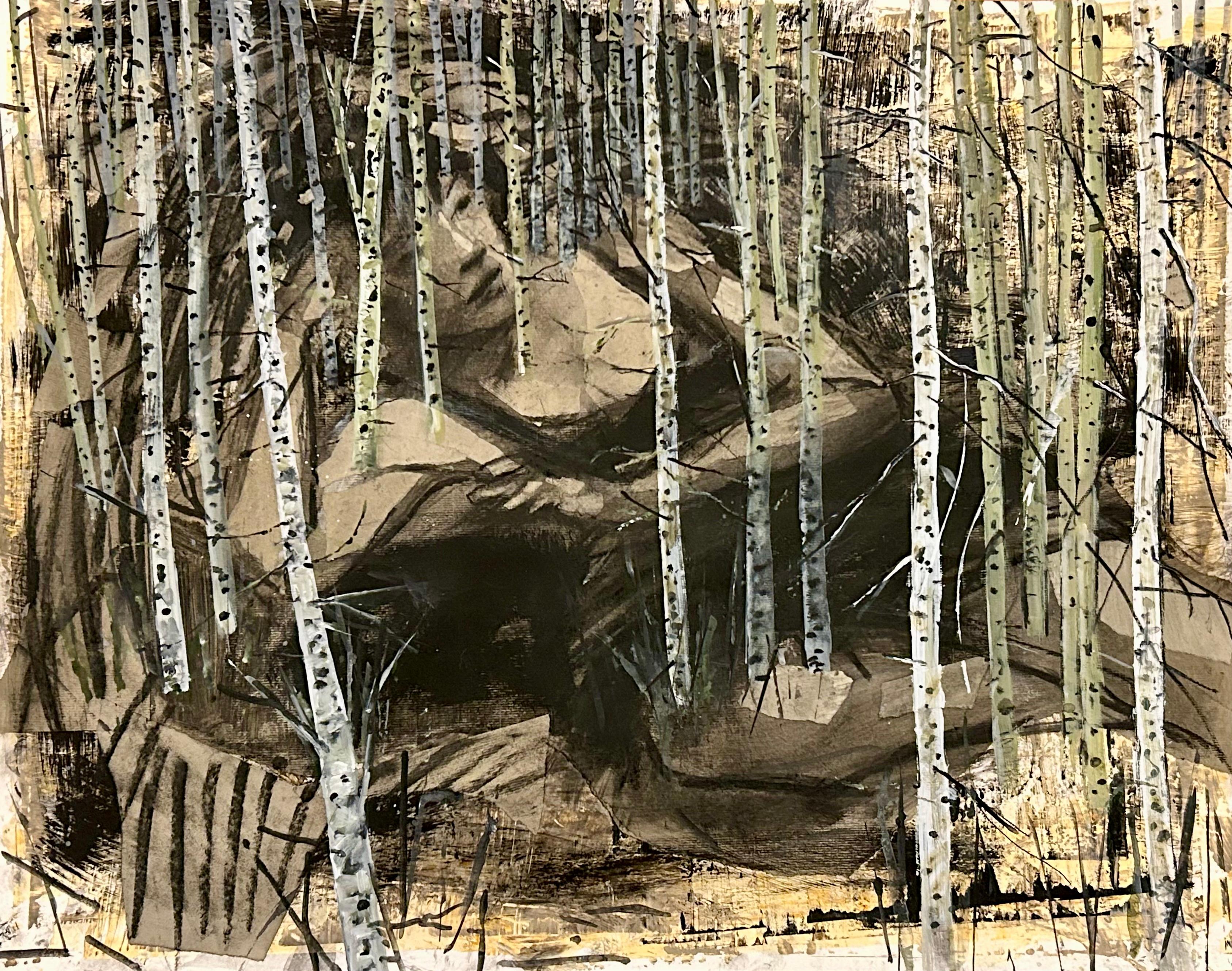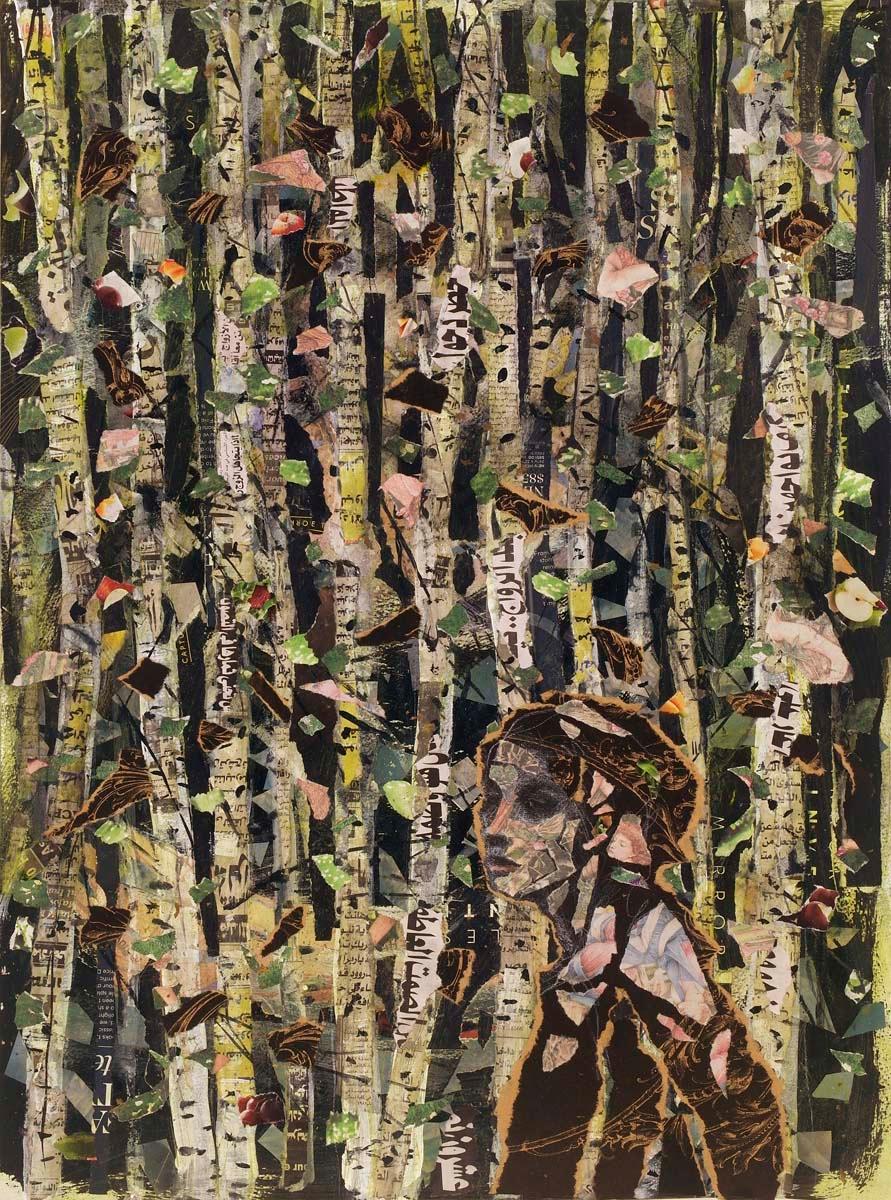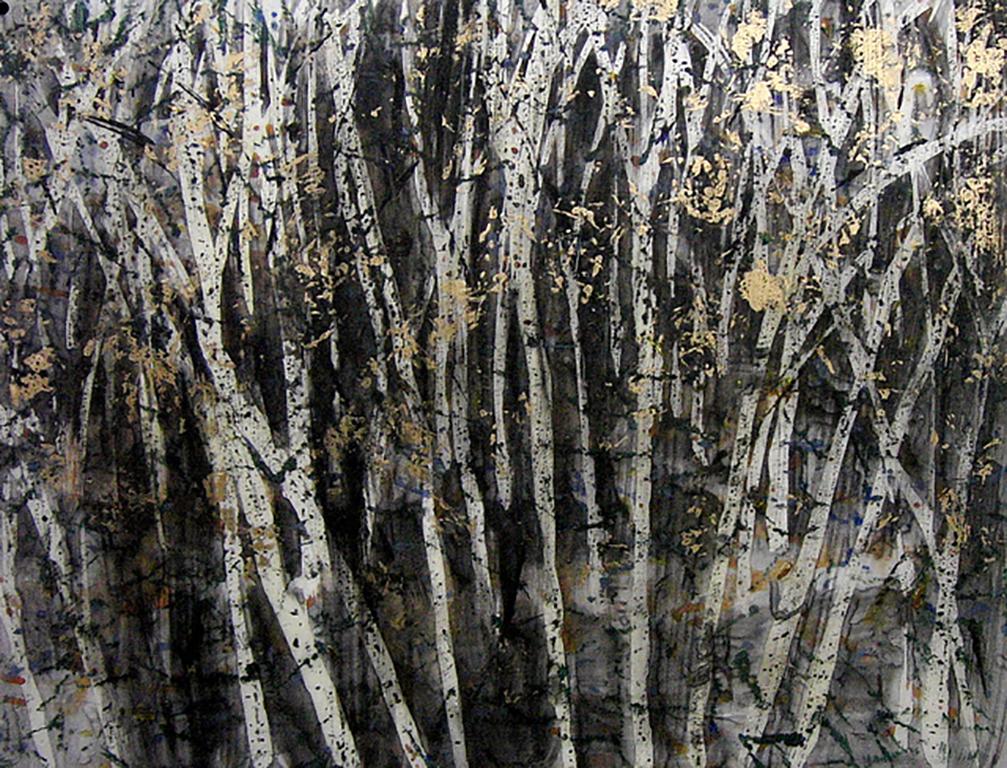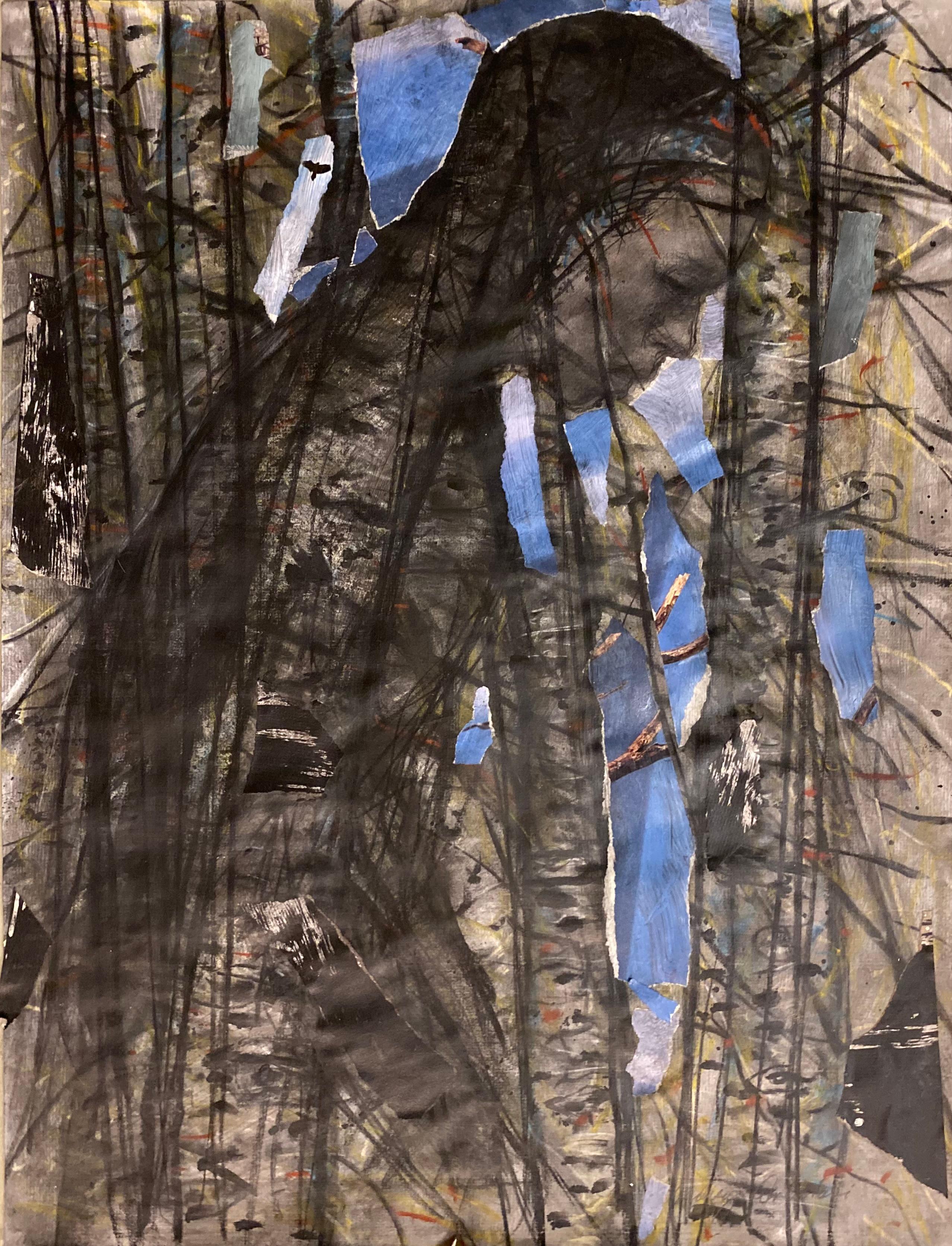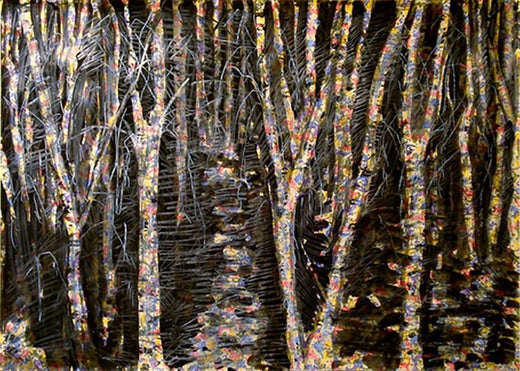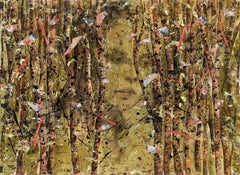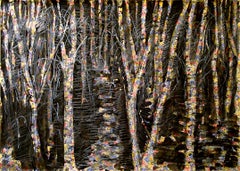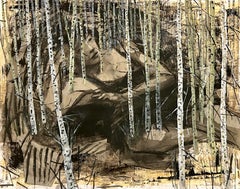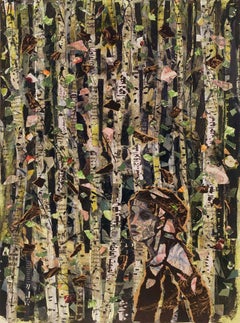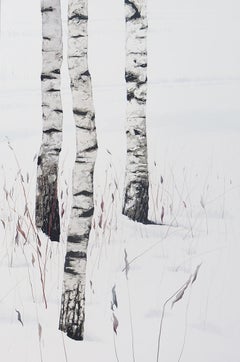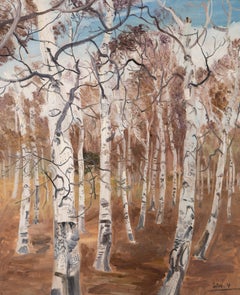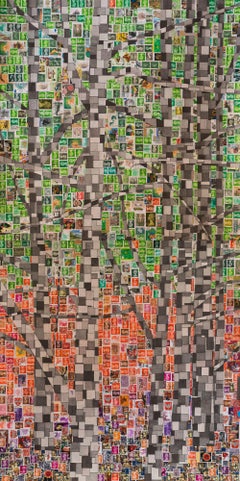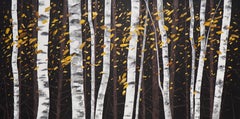Items Similar to Obscura, face w birch trees, nature, monochromatic
Want more images or videos?
Request additional images or videos from the seller
1 of 2
Audrey Frank AnastasiObscura, face w birch trees, nature, monochromatic2017
2017
$750
£572.23
€651.44
CA$1,054.13
A$1,158.75
CHF 608.34
MX$13,778.36
NOK 7,812.44
SEK 7,116.29
DKK 4,867.30
About the Item
Starting with observational drawings from life, these works evolve through a series of variations, modifying tonality and forest elements.Even though recognizable as trees, the artist considers the birch works to be process-oriented abstractions. "I am interested in the interplay between the abstract markings and the staccato character of the tree forms. With dense repetitions and anthropomorphic suggestions, the birch tree series presents forests that are akin to those of childhood fairytales, where one can be hopelessly lost. Coexisting with this discomforting circumstance, there remains a suggestion of the endless wonder, continuity, and power of renewal in nature. Life spirit prevails beyond what is scientifically measurable and knowable in a physical sense. And, for me, this confirms faith in the unknowable."
- Creator:
- Creation Year:2017
- Dimensions:Height: 25 in (63.5 cm)Width: 19 in (48.26 cm)
- Medium:
- Movement & Style:
- Period:
- Condition:
- Gallery Location:Brooklyn, NY
- Reference Number:1stDibs: LU133919105982
Audrey Frank Anastasi
Audrey Frank Anastasi is a prolific feminist artist, working in painting, drawing, collage, mixed media, & printmaking. She is also curator, gallerist, educator and arts advocate. Most of Ms. Anastasi's figurative works are painted with her non-dominant left hand. She has created large bodies of works of birds, animals and birch trees. She has had 20 solo & 200 group shows. Her "ref-u-gee" series will be shown in 2020 at Medgar Evers College in collaboration with the Valentine Museum of Art, Brooklyn. Accompanying the show will be a limited-edition monograph w/ over 180 images and a foreword by Phyllis Braff. Ms. Anastasi's collage series was exhibited at Welancora Gallery, Brooklyn, in May, 2019. In 2018, ten paintings were exhibited in "Painting to Survive," curated by Yale critic Jonathan Weinberg. Book and catalog publications include "Stations of the Cross", SPQR press, BREUCKELEN magazine, “Audrey Frank Anastasi”, catalog essay Cindy Nemser, and "Collage," essay by Giancarlo T. Roma. Public art includes a portrait of Jo Davidson at the Trailside Museum & Zoo, Bear Mountain State Park, NY, and the Stations of the Cross in the auditorium of Our Lady of Angels RC Church, Brooklyn. Her work is in Valentine Museum of Art, Brooklyn, NY, Munson Williams Proctor Art Institute, Utica, NY, Museum Pinacoteca do Estado de São Paulo, Brazil, Pfizer Corporation, NY, Avon Corporation, St. Vincent's Hospital Collection, NYC & MoMA Photography Archives.
About the Seller
5.0
Gold Seller
Premium sellers maintaining a 4.3+ rating and 24-hour response times
Established in 2005
1stDibs seller since 2020
105 sales on 1stDibs
Typical response time: 8 hours
- ShippingRetrieving quote...Shipping from: Brooklyn, NY
- Return Policy
More From This Seller
View AllRed Birch, disrupted realism, nature, woman, muted reds, mystery
By Audrey Anastasi
Located in Brooklyn, NY
Paper paint charcoal collage
Paper charcoal collage
These collages were created first in the presence of a live model, working quickly, in charcoal and pastel, and again, later, alon...
Category
2010s Assemblage Landscape Drawings and Watercolors
Materials
Charcoal, Acrylic, Archival Paper, Magazine Paper
Florentine Birch, trees, nature, over classically patterned paper
By Audrey Frank Anastasi
Located in Brooklyn, NY
Even though recognizable as trees, the artist considers the birch works to be process-oriented abstractions. "I am interested in the interplay between the abstract markings and the s...
Category
2010s American Modern Mixed Media
Materials
Mixed Media, Acrylic
Birch Mystery, trees, female figure, neutral tones, collage on archival paper
By Audrey Anastasi
Located in Brooklyn, NY
Paper paint charcoal collage
Paper charcoal collage
These collages were created first in the presence of a live model, working quickly, in charcoal and again, later, alone in the stu...
Category
2010s Surrealist Landscape Drawings and Watercolors
Materials
Charcoal, Archival Paper, Acrylic, Mixed Media
Persian Forest, dark patterns, birch trees female figure Arabic writing text
By Audrey Anastasi
Located in Brooklyn, NY
These collages were created first in the presence of a live model, working quickly, in charcoal and pastel, and again, later, alone in the studio, furiously tearing and pasting image...
Category
2010s American Impressionist Mixed Media
Materials
Mixed Media
Birch Abstract, dark mixed media, mylar, trees, abstraction, muted colors w gold
By Audrey Frank Anastasi
Located in Brooklyn, NY
mixed media on mylar
Among the best selling works by Audrey Frank Anastasi are the birch trees, "process-oriented works, drawn and painted in various media.
According to Ms. Anast...
Category
2010s Expressionist Landscape Drawings and Watercolors
Materials
Mylar, Mixed Media
Mythical Man, male figure w dark skin among birch tree forest earth tones, blue
By Audrey Anastasi
Located in Brooklyn, NY
These collages were created first in the presence of a model, working quickly, in charcoal and pastel, and again, later, alone, furiously tearing and pasting images from magazines, v...
Category
2010s Surrealist Mixed Media
Materials
Mixed Media, Archival Paper
You May Also Like
BIRCHES - 3 Contemporary Atmospheric Landscape, Modern Painting
By Grzegorz Wójcik
Located in Salzburg, AT
It is possible to purchase the entire diptych. Please see my other items and offers.
Birches IV, Part 3, acrylic, modeling paste on canvas
Please ask me about shipping costs becaus...
Category
2010s Contemporary Landscape Paintings
Materials
Paste, Cotton Canvas, Acrylic
$2,108 Sale Price
20% Off
HuiMin Wang Landscape Original Oil On Canvas "Birch Tree 1"
Located in New York, NY
Title: Birch Tree 1
Medium: Oil on canvas
Size: 19.25 x 23.25inches
Frame: Framing options available!
Age: 2000s
Condition: Painting appears to be in excellent condition.
Note...
Category
21st Century and Contemporary Contemporary Landscape Paintings
Materials
Oil
$750 Sale Price
50% Off
Composition VII - Birches, Mixed Media on Paper
By Jakub Pasierkiewicz
Located in Yardley, PA
The main focus of my work is placed upon compilations of various pre-existing materials (in this artwork I used stamps) , which were collected from the surrounding environment and th...
Category
2010s Abstract Mixed Media
Materials
Mixed Media
BIRCHES VI - Contemporary Atmospheric and Modern Nature Painting
By Grzegorz Wójcik
Located in Salzburg, AT
A few words of the artist about his art:
When i painting landscapes, I usually choose simple geometric arrangements, contrasts of verticals and levels. I juxtapose the smooth surfac...
Category
2010s Contemporary Landscape Paintings
Materials
Cotton Canvas, Acrylic
$2,108 Sale Price
20% Off
Birch Diptych - Abstract Trees Landscape Painting
By Beth Munro
Located in Los Angeles, CA
Beth Munro’s original paintings, whether composed of still life, landscape, or abstract forms, focus on pattern, color, and texture. Munro is inspired by everything from the impressi...
Category
21st Century and Contemporary Abstract Abstract Paintings
Materials
Canvas, Oil
"Up North Birch Bark Series: Homage to Michelangelo Birch Bark Body" D. Barnett
By David Barnett
Located in Milwaukee, WI
"Up North Series: Homage to Michelangelo Birch Bark Body" is an original watercolor on birch bark by David Barnett. The artist signed and dated the piece lower right on the backing b...
Category
Early 2000s Contemporary Figurative Drawings and Watercolors
Materials
Found Objects, Watercolor
More Ways To Browse
Monochromatic Art
Art Birch Trees
Vintage Couple Art
Piggy Bank
Sepia Prints
Madonna Vintage
Cambridge University
Butterfly Prints
Etchings France
Naked Woman
Oil Painting Still Life With Apples
20th Century Dutch Oil Paintings
Interview Magazine
Original Picasso
Silver Gelatin New York
Dutch School
Little Girl
Printing Plate
